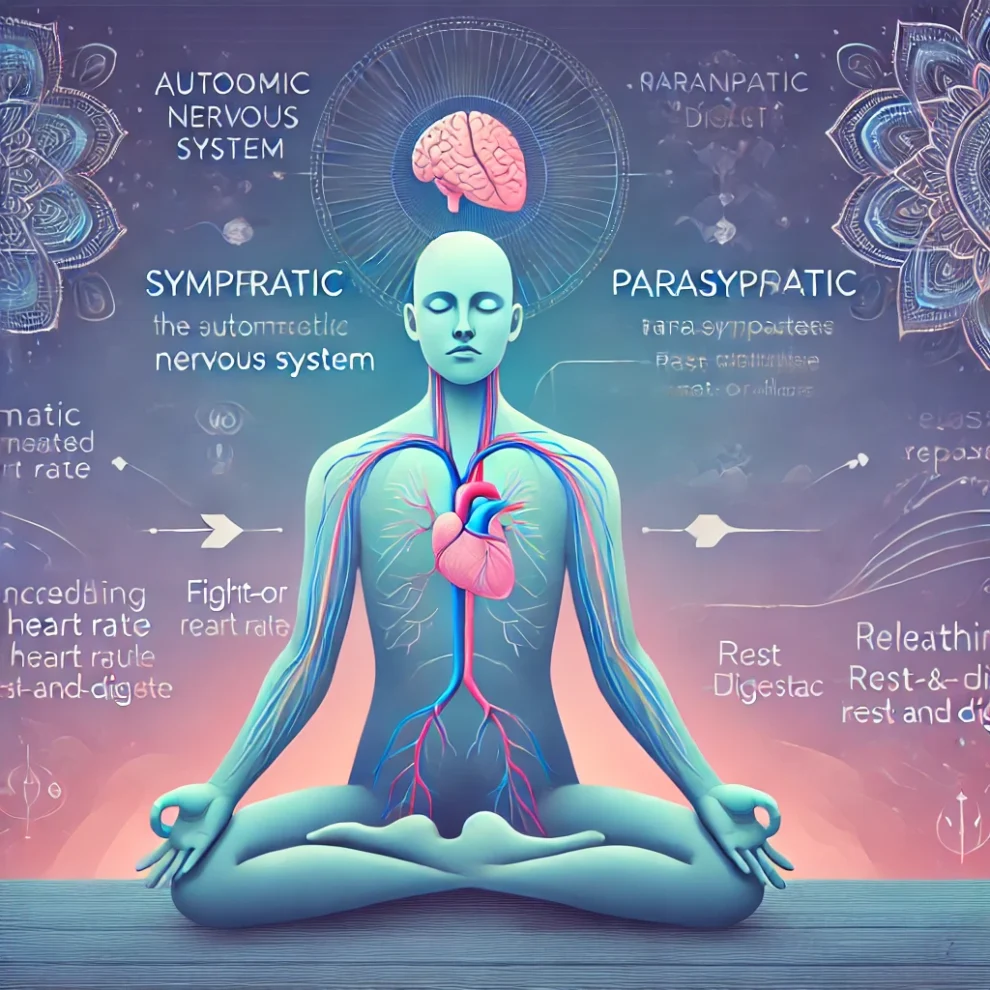Mastering Nervous System Regulation: A Guide to Balance, Awareness, and Resilience
Section 1: Understanding Your Nervous System
The Sympathetic vs. Parasympathetic Nervous System
Your autonomic nervous system (ANS) operates largely outside of your conscious control, regulating bodily functions like heart rate, digestion, and stress responses. It has two main branches:
1. Sympathetic Nervous System (SNS) – The “Fight-or-Flight” Mode
Purpose: Prepares the body to respond to threats.
Physical Effects: Increased heart rate, shallow breathing, muscle tension, and a surge of adrenaline.
Mental Effects: Heightened alertness, anxiety, fear, and impulsivity.
When Activated: During stress, danger, or even perceived threats (e.g., social anxiety, deadlines, conflict).
2. Parasympathetic Nervous System (PNS) – The “Rest-and-Digest” Mode
Purpose: Promotes relaxation, healing, and recovery.
Physical Effects: Slower heart rate, deep breathing, muscle relaxation, and better digestion.
Mental Effects: Calmness, clarity, emotional balance, and improved cognitive function.
When Activated: During deep breathing, meditation, sleep, and feelings of safety.
A well-regulated nervous system balances both systems. Chronic stress or unresolved trauma can cause SNS dominance, leading to anxiety, exhaustion, and difficulty calming down. The key is learning to shift toward PNS activation to restore equilibrium.
Section 2: Identifying Overreactions and Triggers
Overreactions happen when the SNS is hyperactive, making small stressors feel overwhelming. These can manifest in three main areas:
1. Emotional Overreactions
Signs: Intense anger, frustration, fear, anxiety, sadness, or numbness.
Common Triggers: Criticism, rejection, feeling out of control, reminders of past trauma.
2. Physical Overreactions
Signs: Racing heart, tight chest, headaches, nausea, dizziness, shallow breathing.
Common Triggers: Sudden loud noises, crowded spaces, intense workouts, overstimulation (e.g., too much screen time).
3. Cognitive Overreactions
Signs: Racing thoughts, black-and-white thinking, catastrophizing, trouble concentrating.
Common Triggers: Deadlines, high expectations, uncertainty, perfectionism, social comparison.
How to Identify Your Triggers
Journal Your Reactions: Write down intense emotional moments and the situation surrounding them.
Notice Patterns: Are there specific people, environments, or thoughts that consistently trigger you?
Track Physical Responses: Pay attention to bodily sensations before emotional spikes.
Recognizing overreactions before they escalate gives you the power to disrupt harmful patterns.
Section 3: Rewiring Neural Pathways for Parasympathetic Activation
Shifting from reactivity (SNS dominance) to regulation (PNS activation) requires intentional practice. Here are powerful strategies to retrain your nervous system:
1. Breathwork (The Fastest Way to Switch to PNS Mode)
Box Breathing: Inhale for 4 seconds, hold for 4, exhale for 4, hold for 4.
Extended Exhales: Inhale for 4 seconds, exhale for 6-8 seconds (activates the vagus nerve).
Diaphragmatic Breathing: Breathe deeply into your belly rather than your chest.
2. Cold Exposure
Splash cold water on your face, take a cold shower, or expose yourself to cool air.
This activates the dive reflex, slowing heart rate and shifting the body into relaxation.
3. Sensory Grounding
5-4-3-2-1 Method: Identify 5 things you see, 4 you touch, 3 you hear, 2 you smell, and 1 you taste.
Use physical touch (holding a warm cup, pressing your feet into the ground) to signal safety.
4. Movement & Exercise
Gentle movements (yoga, walking, stretching) help discharge excess energy from the SNS.
Resistance training and cardio can also be beneficial, but balance intense workouts with restorative activities.
5. Polyvagal Stimulation (Activating the Vagus Nerve)
Humming, Singing, Chanting: Vibrations stimulate the vagus nerve, promoting relaxation.
Gargling Water: Another effective way to activate the vagus nerve and switch to PNS mode.
6. Reframing Thought Patterns
Name It to Tame It: When overwhelmed, say aloud: “This is anxiety, not danger.”
Reframe Fear: Replace “I can’t handle this” with “I’m learning to navigate this.”
7. Safe Social Connection
Being around calm, supportive people co-regulates your nervous system.
Engaging in eye contact and physical touch (hugs, hand-holding) strengthens feelings of safety.
Section 4: Creating a Resilience-Building Daily Routine
A structured routine helps train your nervous system toward calm and resilience. Here’s a customizable daily plan:
Morning Routine (Set the Tone for the Day)
Wake up gently (avoid checking phone first thing).
Breathwork or meditation (5-10 minutes).
Morning movement (yoga, stretching, light exercise).
Grounding activity (journaling, gratitude practice).
Protein-rich breakfast to stabilize blood sugar (low sugar prevents stress spikes).
Midday Check-In (Regulating While Active)
Pause & Breathe: Take 3 deep breaths before meals or meetings.
Step Outside: Natural light and fresh air help reset stress levels.
Body Awareness: Notice tension in shoulders, jaw, or stomach and consciously relax.
Evening Wind-Down (Activating PNS for Restful Sleep)
Reduce Stimulation: Dim lights, turn off screens 1 hour before bed.
Relaxing Activity: Read, listen to calming music, or take a warm bath.
Journaling or Gratitude List: Reflecting on positive moments rewires the brain for resilience.
Consistent Sleep Schedule: Going to bed and waking up at the same time stabilizes the nervous system.
Final Thoughts: Building a Nervous System That Supports You
Mastering your nervous system is about consistency rather than perfection. Small, daily shifts—like breathing deeply, recognizing triggers, and prioritizing relaxation—create profound long-term change.
Key Takeaways:
Understand when your nervous system is in fight-or-flight vs. rest-and-digest mode.
Identify overreaction signs and personal triggers to break automatic stress cycles.
Use science-backed strategies (breathwork, movement, vagus nerve stimulation) to retrain your response to stress.
Build a daily routine that supports nervous system regulation and resilience.
By practicing these tools, you’ll gain the ability to self-regulate, handle challenges with greater ease, and ultimately reclaim control over your mind and body.
Join my restorative yoga class on Wednesdays to deepen this practice even more!
See you on the mat.
In kindness,
The Floral Goose





Add Comment